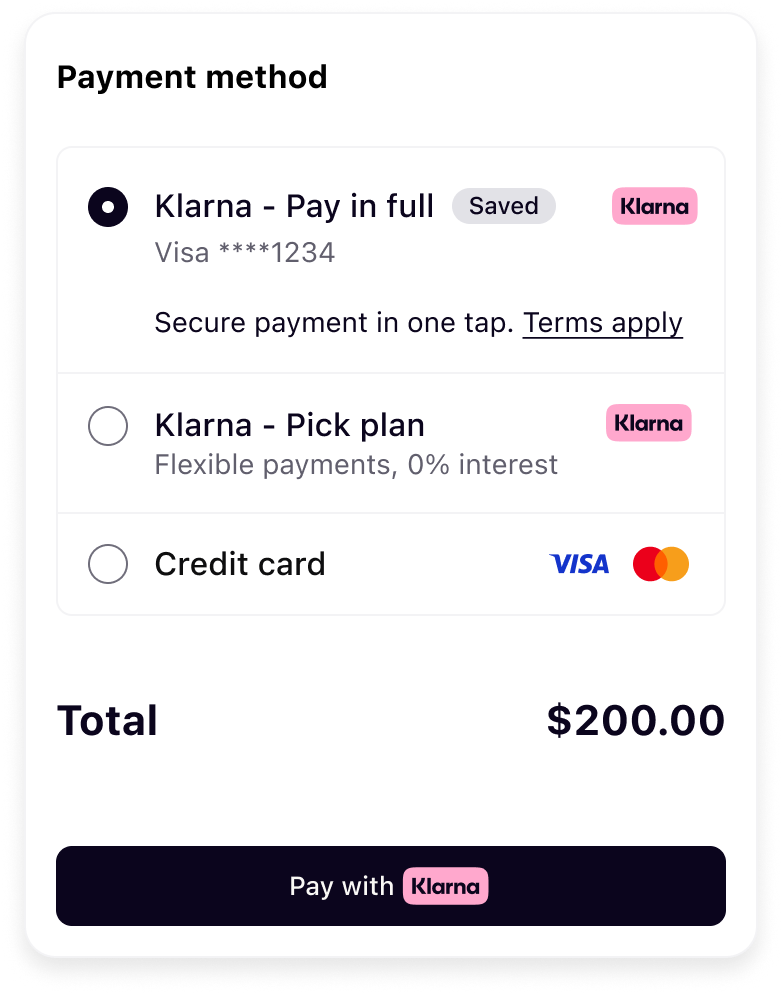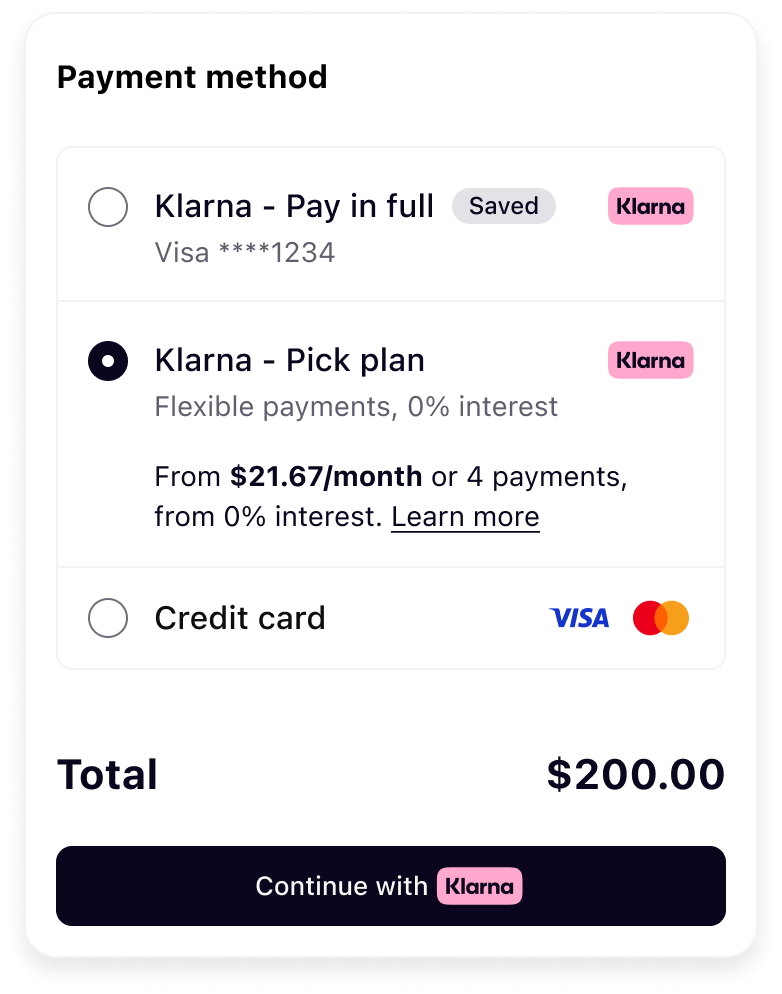Enable a seamless checkout experience by integrating its payment presentation and interoperability features to enhance the checkout experience with up-to-date payment method listings.
Link copied!
This guide explains how to provide dynamic Klarna assets to Partners using Klarna’s Presentation API, enabling them to create their own payment selector in line with Klarna’s best practices.
Below is a step-by-step overview for supporting dynamic payment method listing:
- Accept
interoperability_tokenandinteroperability_datain requests. - Call Klarna’s Payment Presentation API
- Include Klarna-specific display instructions and assets (labels, icons, etc.) in the API response sent to Partners.
Example of the payment selector built by a Partner when the Acquiring Partner enables this support:
 |  |
| Tokenization purchase selection | Pick Plan selection |
This step only applies to Acquiring Partners that have APIs that allow Partners to retrieve available payment methods. It is identical to the server-side only integration for one-time payments.
Link copied!
Link copied!
Klarna uses interoperability_token and interoperability_data to ensure all information and context associated with a Payment Transaction is preserved throughout the journey of a customer. These must be forwarded accurately.
Below an example of how Acquiring Partners can accept the interoperability parameters in their Get Payment Method API endpoint.
Sample request
Copied
{
"currency": "USD",
"amount": 17800,
"locale": "en-US",
"payment_method_options": {
"klarna": {
"interoperability_token": "eyJhbGciOiJ...",
"interoperability_data": "****"
}
}
}
You should name these fields clearly, using either:
klarna_interoperability_token/klarna_interoperability_data, orinteroperability_token/interoperability_data(in Klarna-specific context).
This ensures easy identification for any Partner.
Parameter validation guidelines
As those parameters can change over time and are versioned so that the third party integration continues to work, Acquiring Partners need to respect these guidelines if they wish to validate parameters:
| Parameter | Type | Max length | Validation |
|---|---|---|---|
| string | 8192 chars | Optional: verify length only |
| string (stringified JSON object) | 10240 chars | Optional: check for valid JSON |
The Acquiring Partner can validate the input based on the provided guidelines but must not modify it. The input must always be forwarded as received, without any interference.
Link copied!
The Klarna Payment Presentation API
Copied
/v2/accounts/{partner_account_id}/payment/presentation| Parameter | Required | Description |
|---|---|---|
Copied partner_account_id | Yes | Unique account identifier assigned by Klarna to the onboarded merchant |
Link copied!
Your API response (e.g., for Get Payment Methods) should include the Klarna assets returned in the response from the Payment Presentation API, so your Partner can render the payment method correctly.
You have two options:
- Map individual fields: Extract and structure the response from Klarna’s Payment Presentation API and map relevant keys (e.g.,
descriptor,payment_button) into your API response format. - Serialize the entire response: Alternatively, you may populate a single field—
klarna_payment_presentation_data—with a serialized version (e.g., JSON string) of the full response obtained from Klarna’s Payment Presentation API. This avoids the need to map each field individually.
Copied
{
"payment_methods": [{
"name": "VISA",
"type": "scheme"
}, {
"name": "Pay with Klarna",
"type": "klarna",
"klarna_payment_presentation_data": "{\"instruction\":\"SHOW_KLARNA\",...}"
}]
}
You may structure the response to fit your API format, but ensure that the Klarna presentation data is clearly identifiable. Use a field name like:
klarna_payment_presentation_data- or
payment_presentation_data(when used specifically for Klarna)
This makes it easy for Partner integrations to parse and use Klarna presentation data dynamically.
